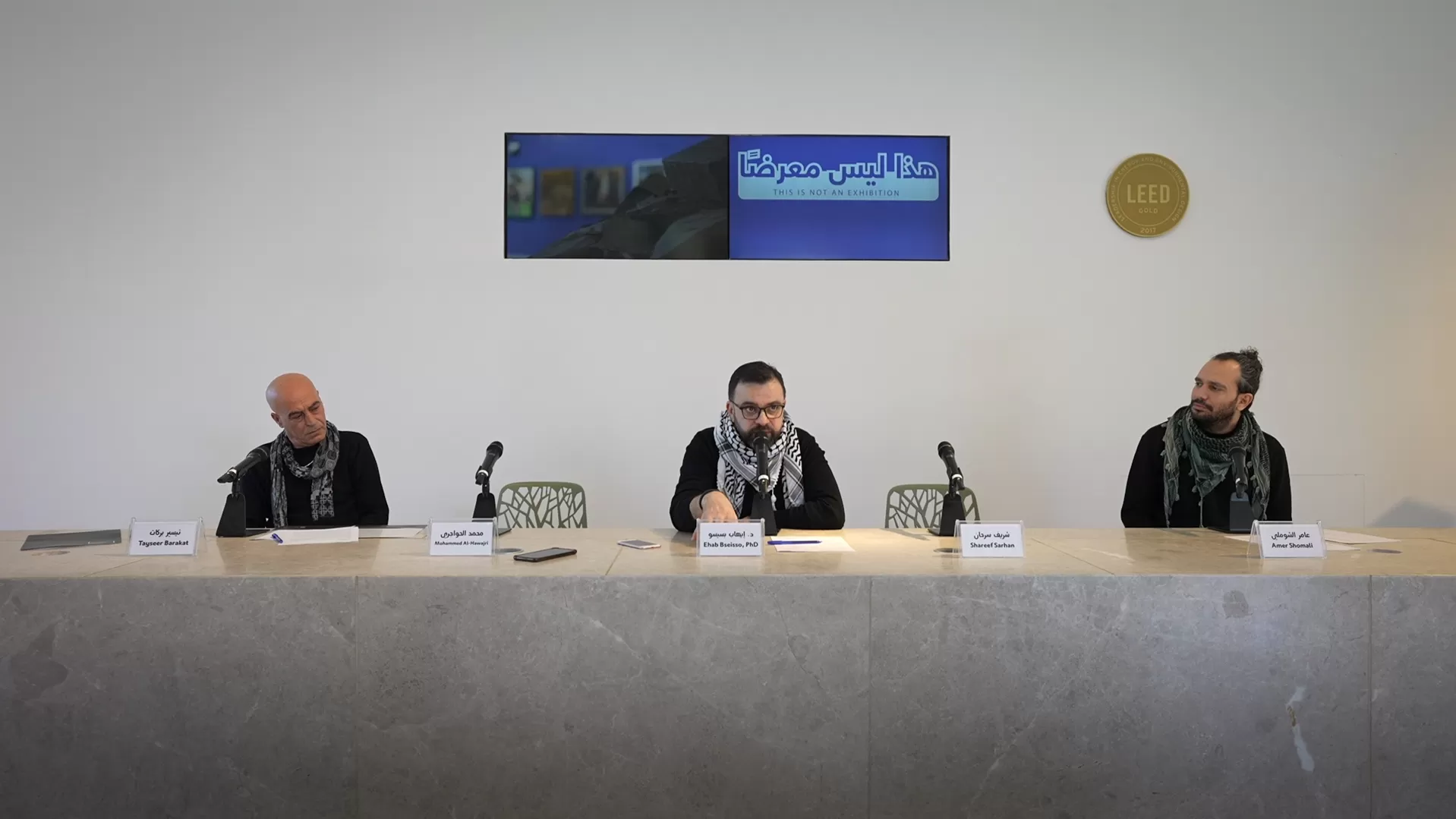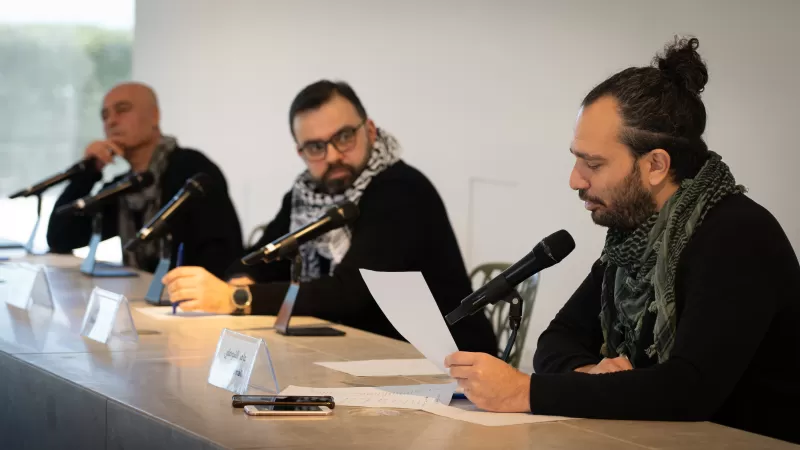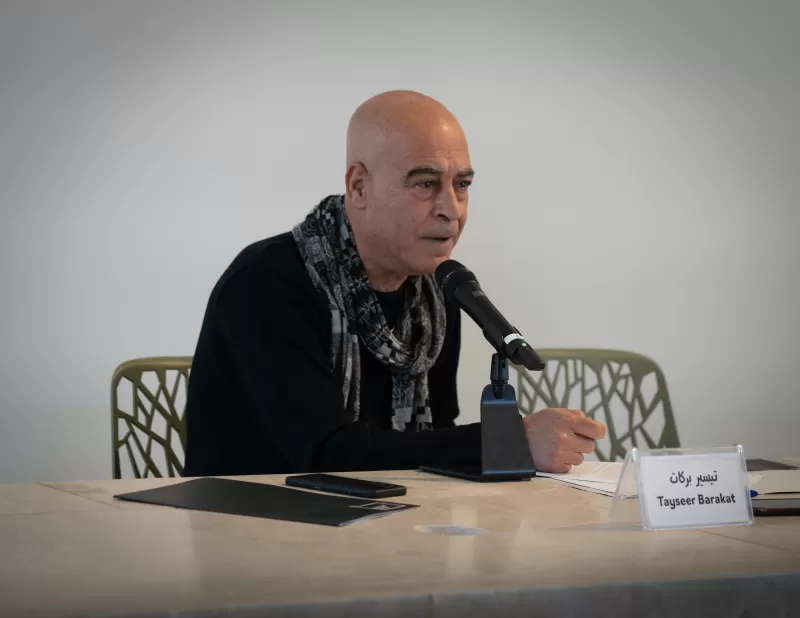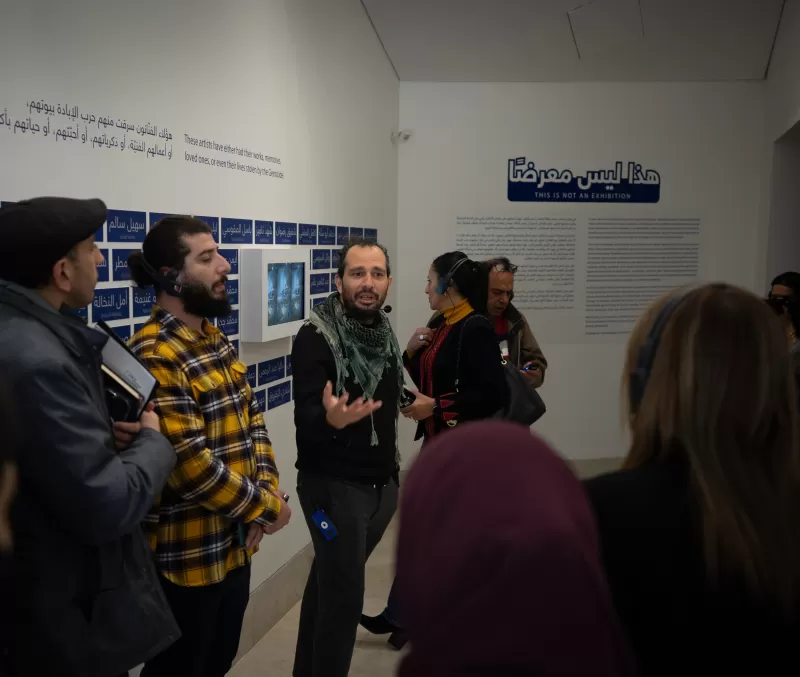
Birzeit - Palestine: After a nearly four-month-long closure from the start of the latest Israeli aggression and the ongoing genocidal war on the Gaza Strip, the Palestinian Museum is announcing the reopening of its doors to the public for an artistic demonstration. Through this undertaking, we seek to raise our voices loudly against the massacres and systematic destruction of our beloved Gaza.
This demonstration will take form through three parallel exhibition spaces, the first of which is This is Not an Exhibition; using the main exhibition hall as its space, it brings together the works of more than 100 Gazan artists. The second space is the solo exhibition The Disappeared by the artist Tayseer Barakat to be hosted in the Glass Gallery. The third, Women of Gaza, highlights popular heritage objects from different regions of Gaza.
For This is Not an Exhibition, Eltiqa Art Gallery and Shababek for contemporary art have been invited to use the Palestinian Museum’s main exhibition hall as their own after the flames of war swallowed their spaces in Gaza. Similarly, they have been passed “the mic”: the platform of the Palestinian Museum to amplify their voices which the Occupation has tried, in every way possible, to cut off from the rest of the world.
This effort brings together more than 280 artworks by more than 100 Gazan artists. The artworks have been collected from West Bank homes, galleries, institutions, and universities throughout historic Palestine, in partnership with more than 50 individual and institutional lenders. This moving act of solidarity was made possible by combined efforts that recognised not only the significance of this mission but also the need for collective action to contend with the current challenges. These include but are not limited to the impossibility of communicating with artists in Gaza or shipping their artworks as this war continues to incinerate their homes, studios, and collections. The artworks we are displaying now are from what is left of their creations.
This undertaking should be understood as a living breathing work to which works will be added throughout. These include works by artists we could not reach before the demonstration launch and works by artists to be replaced by others after this massacre ends. Artworks owned by the artists who created them will be available for sale, and 100% of the proceeds will be allocated to these artists as a form of material support.
Artist Shareef Sarhan of Shababek for contemporary art stated that This is Not an Exhibition is a reflection of Palestinian existence, even as Gaza is the victim of a fiery siege and bombings; for the Palestinian artist will always create art that uplifts the voice of Gaza and its people, no matter how isolated from the world they are by the Occupation. Sarhan also emphasises the significance of this exhibition as a space for solidarity and highlighting Gaza’s plights. He adds: “Shababek and Eltiqa Art Gallery are two art groups that have played an important role over the past years in influencing and being influenced by the surroundings. This demonstration thus is acting as an intervention with the public that we have been working to build for years, whether locally or Arab.”
The Disappeared is presented in the Glass Gallery as another window overlooking Gaza. It is comprised of artworks by Tayseer Barakat, an artist from Gaza residing in Ramallah. Barakat has been prolifically depicting the war on his city since 2009; the works presented here simulate a world built on loss in the broadest sense, open to the many possible interpretations as to whether the world we see is that of those who have had something dear to them disappeared to the void or those who themselves are disappeared.
In light of this, Barakat shares how “The scenes of those carrying pictures of their missing children in the regions of the Middle East are always on my mind, whether in Palestine, Lebanon, or Syria. These people rush to the streets in protest to find out the fate of their children, relatives, and loved ones who have gone missing even for over twenty and thirty years. I am one of those who lived that experience. My uncle went missing in 1956, and even though I was born after that, the question of his fate was always pressing upon me. To this very day, we know nothing" He added: “The recent war on the Gaza Strip has increased this strain through the loss of loved ones, friends, and siblings, especially those who have disappeared under the rubble of buildings. These thousands in Gaza have compelled me to revolve my work around the disappeared and around the concept of disappearance itself, a concept that has deeply wounded me to my core.”
In parallel is the Women of Gaza space, an ethnographic display in the Museum lobby comprised of traditional thobes (dresses) and jewellery that tells the story of Gaza in all its creativity and material solidarity in the face of violent displacement, thus bearing witness to the eternal love embedded in the immortal heritage binding together the women of Palestine.
For his part, Museum Director General Amer Shomali affirms that “in light of the destruction and genocide that cultural life in Gaza is being subjected to, and the burning, desecration, and looting of artworks taking place within this genocide, our responsibility is to be an alternative space for Gazan cultural institutions and artists and a platform for their voices. When the Occupation so brazenly aims to silence Gaza and isolate it from the world, we must reject this and pass on Gaza’s voice. Today we are witnessing the formation of new spaces that embrace Gaza so that Gaza becomes the size of the world, far transcending the borders of this small besieged geographical area.”
The Palestinian Museum-Non-Governmental Association is an independent cultural organisation dedicated to supporting an open and vibrant Palestinian culture locally and internationally. The Museum presents and contributes to narratives on Palestinian history, culture, and society from a new perspective. It also offers spaces for creative ventures, educational programmes, and innovative research. It is one of the most significant contemporary cultural projects in Palestine.
Finis


